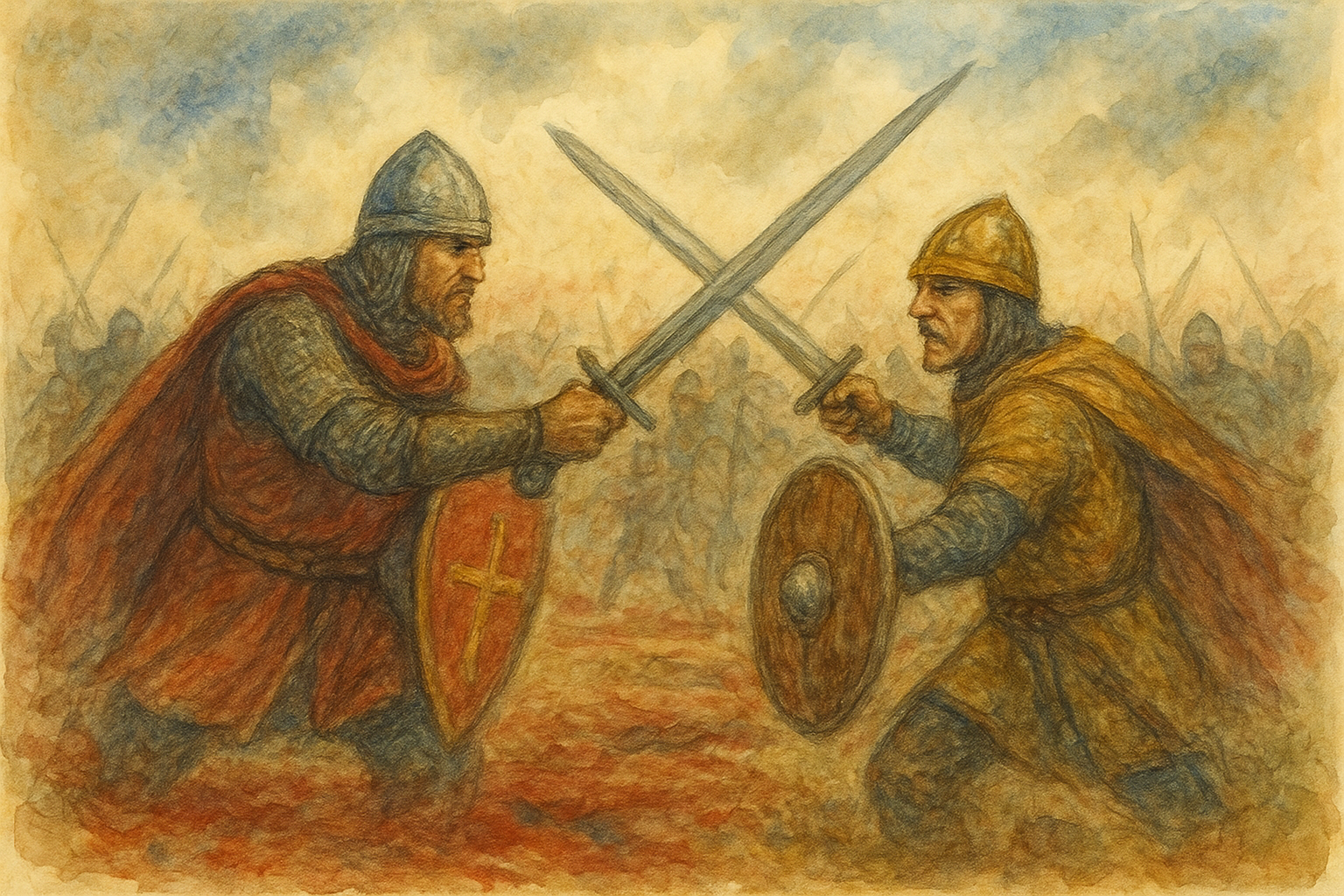The Norman invasion of England in 1066 was a watershed moment in medieval European history that reshaped political structures, social relations, language, law, and culture across the British Isles and the Continent. Its immediate trigger was a dynastic crisis after the death of Edward the Confessor, who left no clear heir. Competing claims to the throne—most prominently from Harold Godwinson, who was crowned king by the English nobility, and William, duke of Normandy, who asserted a prior promise by Edward and a sworn pledge by Harold—set the stage for armed confrontation. William secured papal support and assembled a multinational force drawn from Normandy, northern France, Brittany, Flanders, and other regions before crossing the English Channel in late September 1066.
The year 1066, however, contained multiple campaigns that shaped the conditions at Hastings. Harold Godwinson's forces had just marched north to defeat an invading Norwegian army under Harald Hardrada at the Battle of Stamford Bridge, a victory that left Harold's troops exhausted and diminished; within weeks Harold turned south to meet William's landing at Pevensey and then at Senlac Hill near Hastings. The Norman army combined cavalry, infantry, and archers and employed tactics that exploited mobility and coordination among arms, while the English relied heavily on a shield wall of infantrymen drawn from the fyrd and thegnly retinues. After a day of grinding combat on October 14, 1066, the Norman forces used a combination of missile fire, cavalry charges, and what chroniclers describe as feigned retreats to break the English formation; the death of King Harold—depicted in the Bayeux Tapestry and various chronicles—was decisive, after which organized resistance collapsed and William advanced on London.
William's victory did not merely replace one monarch with another; it instigated a transformative program of consolidation that reconfigured landholding, administration, and the social order. William rewarded his Norman followers with English lands, systematically dispossessed many leading Anglo-Saxon nobles, and introduced a ruling class with close cultural and political ties to Normandy and the broader French-speaking world. The transfer of property and titles was recorded in William's great survey, the Domesday Book of 1086, which provided a fiscal and administrative foundation for Norman rule and illustrated the dramatic reallocation of wealth and power across the realm.
Institutionally, the conquest accelerated the spread of feudal relationships in England. Although elements of feudalism predated 1066, William's regime formalized patterns of land tenure defined by service and loyalty to the crown, centralized royal authority, and constructed a network of castles and fortified strongpoints that both symbolized and operationalized Norman control. Castles—initially timber motte-and-bailey structures and later stone keeps—served as military bases, administrative centers, and visible deterrents to rebellion, enabling a Norman monarchy to govern more directly across a previously more localized and aristocratically diffuse polity.
Cultural and linguistic consequences were profound and long-lasting. The ruling elite spoke a variety of Norman French, which became the language of court, law, and high culture for centuries, while Latin remained the language of record and ecclesiastical authority. The contact among Old English, Anglo-Norman, and Latin produced a richly hybrid vocabulary and grammatical layering that over generations evolved into Middle English and ultimately modern English; legal and administrative practices also absorbed continental models, reshaping common law and governance in enduring ways.
The Norman Conquest also had international ripple effects. It tied England more closely to continental politics and conflicts, altered the balance of power in northern France, and anchored William's successors as significant players in European dynastic diplomacy. Internally, the conquest provoked resistance, rebellions, and harsh reprisals including the so-called Harrying of the North, episodes that underscore the violent and coercive nature of the transition. Over the longer term, however, the fusion of Norman and Anglo-Saxon elements created a dynamic medieval society in which new administrative capacities, resource extraction, and cultural synthesis laid the groundwork for England's emergence as a centralized medieval kingdom and a consequential actor in European affairs.
